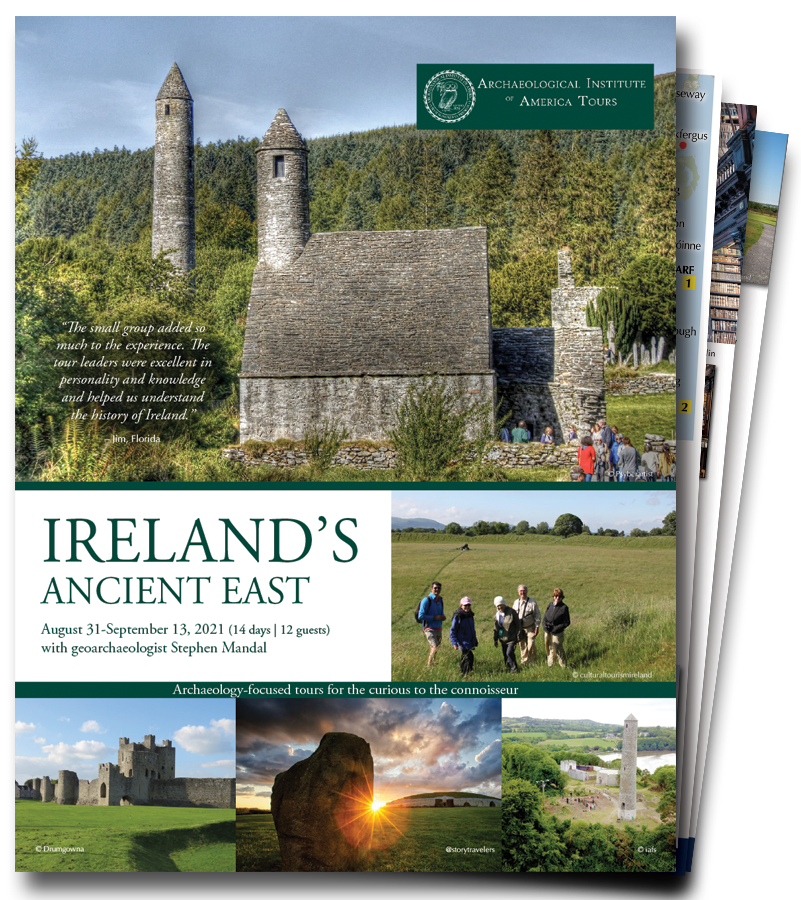This journey takes you through the archaeology, history, and landscapes of “Ireland’s Ancient East” from north to south along the east coast of Ireland. After a few gentle days in Dublin, where you will visit the National Museum of Ireland and explore the city, you will head north to explore the various landscapes of Northern Ireland, including Slieve Gullion, the medieval town of Carrickfergus and the UNESCO World Heritage Site at the Giant’s Causeway. From here, journey south to the Boyne Valley, where you will visit, amongst other sites, the UNESCO World Heritage Site of Brú na Bóinne (Newgrange and Knowth), staying in the heart of the valley in the beautiful village of Slane. The next stop on the journey will be inland to the medieval city of Kilkenny. As well as the castle and medieval streetscape of the city, this will serve as a base to explore the wonderful scenery and amazing hidden archaeological gems of the region. Our journey south ends in Wexford and Waterford, where you will enjoy a day at the Irish National Heritage Park and visit your host’s on-going excavation project. Travel in a small group of no more than 12 travelers and enjoy the personal attention and service of a highly respected Irish academic lecturer/host and a charming tour manager/guide, plus several specialist guest experts.
Pricing Per Person (12 nights)
Double occupancy (10-12 participants) $7,945
Single Supplement $1,145
Single room supplement will be charged when requested or required (limited availability). With fewer than 10 participants, a small group surcharge may be added.
To reserve your space using the online form, click here.
For reservations or questions, please email us at aia@studytours.org (and include your full name) or call us toll-free at (800) 748-6262 (toll: 603-756-2884).
